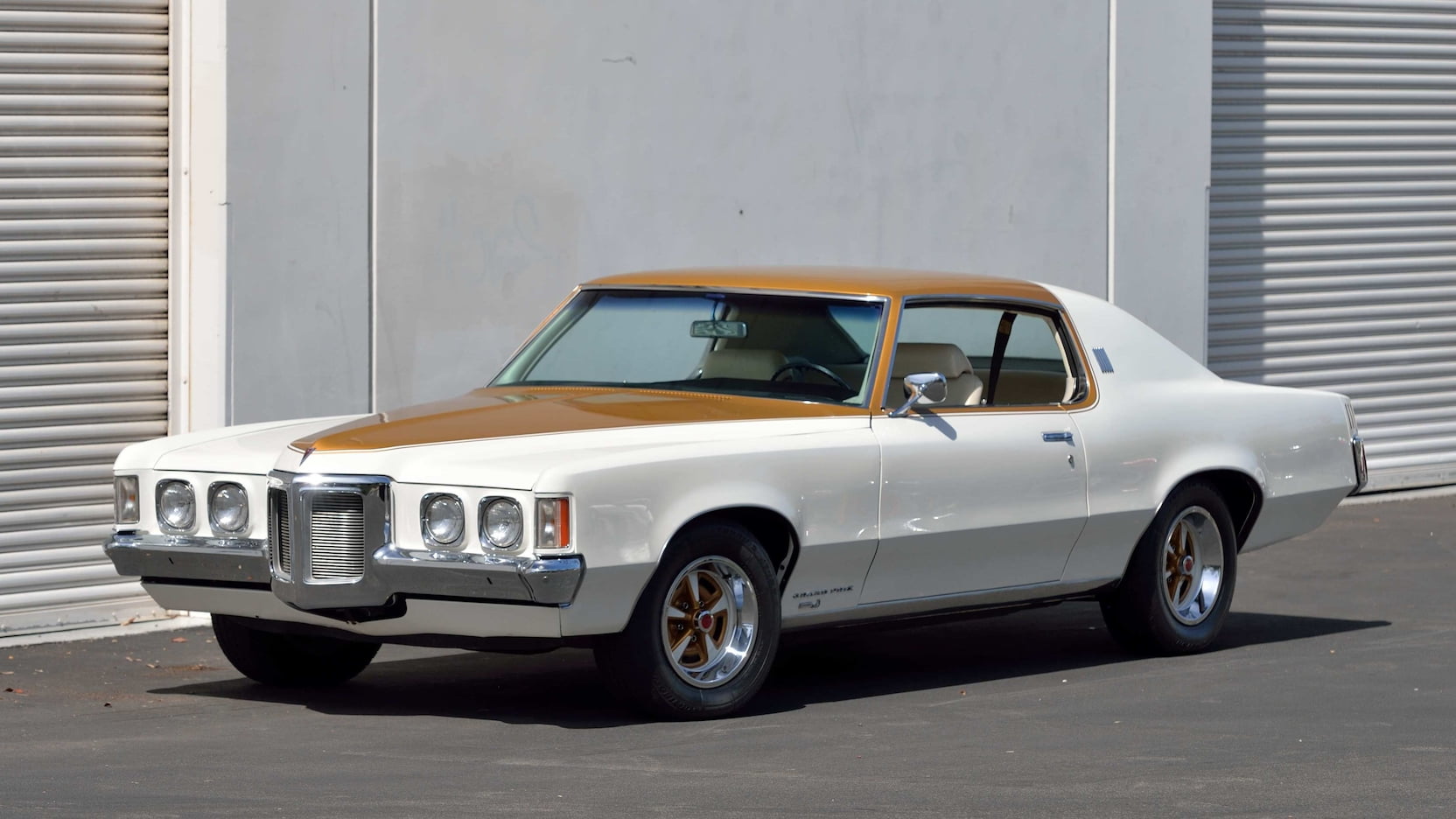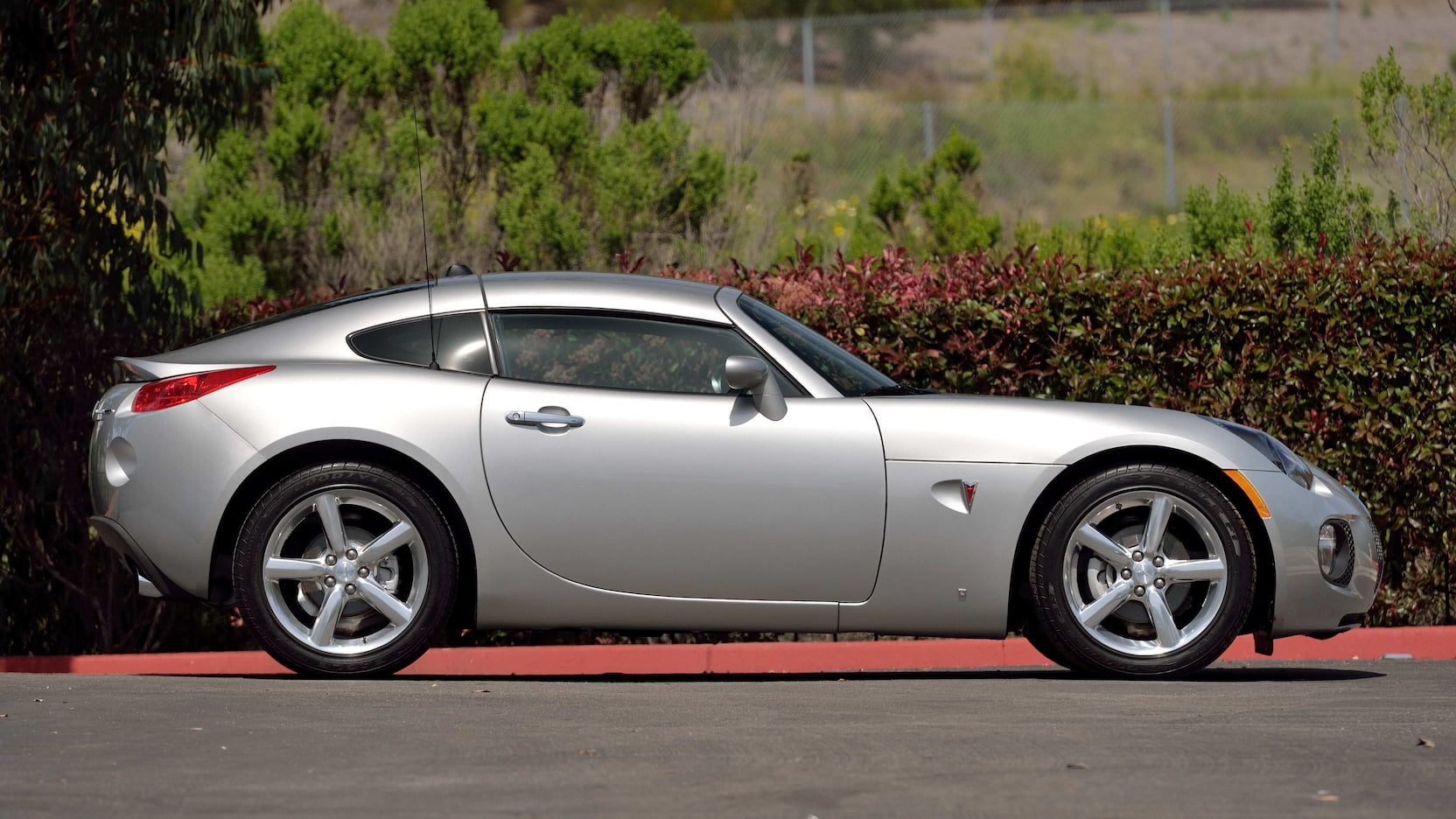Jim Wangers personal collection is packed with Pontiac V-8 power—and it’s for sale
Jim Wangers is best known for his role in bringing the Pontiac GTO to life. His marketing prowess put the archetypal muscle car in an infamous Car and Driver story that pitted a secretly-not-quite-stock 1964 GTO against Ferrari’s GTO, helping cement the car’s status as a world-class performer. Wangers later spearheaded the outrageous GTO Judge, but his love for Pontiac goes way back. In 1960, he piloted a 1960 Catalina to the NHRA Stock Eliminator title at the U.S. Nationals in Detroit. (And we know from finding his car on Barn Find Hunter that he had great taste in Trans Ams, too).
Now, several of Wangers’ Pontiac and Pontiac-powered cars are heading to the auction block at Mecum’s Indianapolis sale on May 14–19. Here are five from Pontiac’s consummate champion.
1966 Pontiac GTO

Estimate: $125,000–$150,000
An homage to the two Royal Pontiac GeeTO drag cars that toured the country, this tribute car goes more than skin deep. It’s powered by a 505-cubic-inch Pontiac V-8 built by Butler Performance, topped with a set of Edelbrock aluminum round-port heads and intake manifold. Its valvetrain uses roller rockers and a Comp solid roller cam. With big lift, lots of duration, and more cylinder head flow than Pontiac engineers could muster in the ‘60s, this black and orange bruiser is good for low 10-second elapsed times that do justice to Pontiac’s performance heritage.
1969 Pontiac Grand Prix Model J

Estimate: $40,000–$65,000
In 1968, Jim Wangers customized his personal 1969 Grand Prix SJ with white and gold Rally II wheels and gold two-tone to accent the body lines. He hoped to turn it into a special model for Pontiac, but John Z. DeLorean passed on the idea. Instead, Wangers sold the car to Hurst, who used it as the prototype for the 1970 Hurst SSJ. This replica of that prototype was built by Wangers in the early 2000s and uses a Pontiac 400 V-8 and Turbo 400 just like his original.
It’s not quite as cool as owning that original prototype, but this muscle cruiser has all the right pieces and great looks to match. With just 47,700 miles, it would be a solid survivor car even without its provenance.
2009 Pontiac Solstice GXP Coupe

Estimate: $45,000–$70,000
The drop-top Solstice was a Miata fighter in its 2.4-liter base trim, even if it didn’t quite nail the Mazda’s road feel. In its turbocharged GXP guise, its power-to-weight ratio was comparable to a contemporary Mustang GT, especially with the factory tune that increased output to 290 horsepower, and its independent rear suspension made for an appealing, sporty package. The rare hardtop, however, was a stunner.
Jim Wangers’ Solstice hardtop purchase was arranged by Bob Lutz. It has just 7726 miles and is in original condition with the only addition being Wanger’s signature on the engine cover. Just 110 GXP hardtops were produced with a manual, making this an incredibly rare car, especially for a mainstream manufacturer like GM.
1987 Chevrolet Monte Carlo

Estimate: $45,000–$75,000
This former street racer melds the best of late-‘80s Chevy G-body with a 467-cubic-inch Pontiac V-8 in an amalgam that’s appropriately nicknamed Ponte Carlo. This ‘caged and stripped beast is built to be thrashed on the quarter-mile, with quality chassis and drivetrain parts throughout. Its big Poncho V-8 is fed via Holley Dominator that draws air through a Trans Am-inspired hood scoop.
2000 Holden HSV-GTSR

Estimate: $50,000–$75,000
OK, so this one’s not a Pontiac, and though it doesn’t have a Pontiac V-8 like the previous Chevrolet, it still has a place in the brand’s history. This Holden is one of only 50 produced by HSV and is said to be the only one in the U.S. Jim’s nephew Gordon Wangers imported the car and it was tested by multiple magazines, including Car and Driver, who pitted it and its Callaway-tuned LS1 against a BMW M5. The story goes that this car was driven by Bob Lutz and inspired the development and import of the 2004 GTO.
The good news is that the hot, right-hand-drive, six-speed-manual sedan has just 42,395 miles on the odometer—once you convert from kilometers. The bad news is that it’s not road legal in the States, which relegates it to track use.

